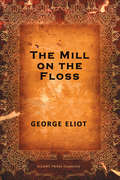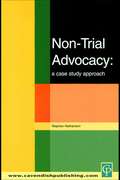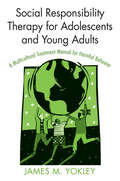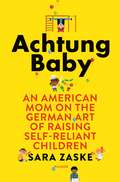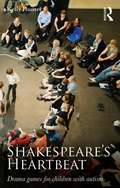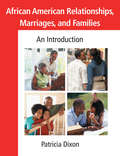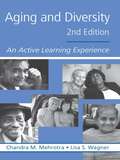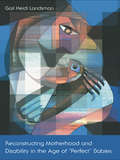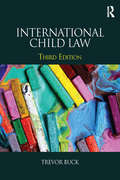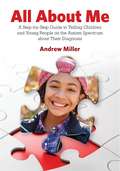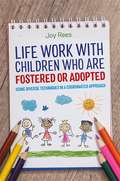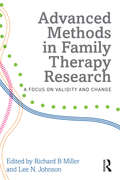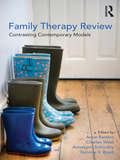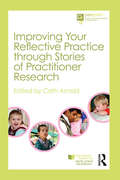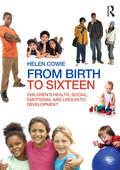- Table View
- List View
The Mill on the Floss
by George EliotDrawing on George Eliot's own childhood experiences to craft an unforgettable story of first love, sibling rivalry and regret, The Mill on the Floss, is the story of Maggie Tulliver's search for love, and acceptance by her family and community, and of her need for intellectual and spiritual growth. Brought up at Dorlcote Mill, Maggie Tulliver worships her brother Tom and is desperate to win the approval of her parents, but her passionate, wayward nature and her fierce intelligence bring her into constant conflict with her family. As she reaches adulthood, the clash between their expectations and her desires is painfully played out as she finds herself torn between her relationships with three very different men: her proud and stubborn brother; hunchbacked Tom Wakem, the son of her family's worst enemy; and the charismatic but dangerous Stephen Guest. With its poignant portrayal of sibling relationships, The Mill on the Floss is considered George Eliot's most autobiographical novel; it is also one of her most powerful and moving.
Non-Trial Advocacy
by Stephen NathansonLawyers use non-trial advocacy skills in court for pre- and post-trial submissions. They are easier to learn than trial advocacy skills, and are much more relevant to the work of most new lawyers. This book examines all key aspects of criminal and civil non-trial advocacy, including bail applications, pleas in mitigation and interim applications made during the course of civil actions. Readers will learn the strategies and techniques of non-trial advocacy through seven realistic case studies: the lawyers involved discuss their strategies and deliver their arguments; the judge makes a decision; and the strengths and weaknesses of the arguments are then analyzed. With this innovative, case study approach to teaching advocacy skills, Non-Trial Advocacy provides an insight into how lawyers think and how they translate their strategies into courtroom action. The book concludes with a discussion of ethical conflicts involved in the practice of advocacy and how these affect the quality of lawyers' work in this field.
Non-Trial Advocacy
by Stephen NathansonLawyers use non-trial advocacy skills in court for pre- and post-trial submissions. They are easier to learn than trial advocacy skills, and are much more relevant to the work of most new lawyers. This book examines all key aspects of criminal and civil non-trial advocacy, including bail applications, pleas in mitigation and interim applications made during the course of civil actions. Readers will learn the strategies and techniques of non-trial advocacy through seven realistic case studies: the lawyers involved discuss their strategies and deliver their arguments; the judge makes a decision; and the strengths and weaknesses of the arguments are then analyzed. With this innovative, case study approach to teaching advocacy skills, Non-Trial Advocacy provides an insight into how lawyers think and how they translate their strategies into courtroom action. The book concludes with a discussion of ethical conflicts involved in the practice of advocacy and how these affect the quality of lawyers' work in this field.
Social Responsibility Therapy for Adolescents and Young Adults: A Multicultural Treatment Manual for Harmful Behavior
by James M. YokleyGain the unique approach to enhance relapse prevention in harmful behavior treatment Social Responsibility Therapy for Adolescents and Young Adults: A Multicultural Treatment Manual for Harmful Behavior is a crucial treatment manual that can be used by mental health professionals whose caseload includes a multicultural population of adolescents and young adults who exhibit multiple forms of harmful behavior. This unique therapy enhances relapse prevention in harmful behavior treatment by addressing the target behavior problem, negative social influence problem, and dose-response problem, along with acknowledging that harmful behavior is multicultural and addressing the key criticisms of multicultural therapy through a theory-driven treatment approach that utilizes methods and procedures from existing evidence-based treatments with known multicultural applications. Social Responsibility Therapy for Adolescents and Young Adults: A Multicultural Treatment Manual for Harmful Behavior provides a comprehensive explanation of Social Responsibility Therapy, its advantages, and the intervention evidence-base for multiple forms of harmful behavior. This text discusses in detail the multicultural intervention approach, its rationale, and content. Implementation methods and treatment protocol are explored. The book includes illustrated case studies, tables, figures, and references to additional available readings. Topics discussed in Social Responsibility Therapy for Adolescents and Young Adults: A Multicultural Treatment Manual for Harmful Behavior include: evidence-based procedures used in Structured Discovery learning experiences to target harmful behavior helping clients discover how they acquired, maintained, and generalized a broad range of harmful behavior addressing target behavior problems, negative social influence problems, and the dose-response problem five areas of human functioning that are critical to the wellbeing of self and others which can only be addressed through psychotherapy and forensic parenting developing prosocial behavior alternatives which contribute to both relapse prevention and personal development and much more! Social Responsibility Therapy for Adolescents and Young Adults: A Multicultural Treatment Manual for Harmful Behavior is an essential resource for social workers, counselors, psychologists, and psychiatrists whose caseloads include a multicultural population of young people who exhibit multiple forms of harmful, abusive behavior.
Social Responsibility Therapy for Adolescents and Young Adults: A Multicultural Treatment Manual for Harmful Behavior
by James M. YokleyGain the unique approach to enhance relapse prevention in harmful behavior treatment Social Responsibility Therapy for Adolescents and Young Adults: A Multicultural Treatment Manual for Harmful Behavior is a crucial treatment manual that can be used by mental health professionals whose caseload includes a multicultural population of adolescents and young adults who exhibit multiple forms of harmful behavior. This unique therapy enhances relapse prevention in harmful behavior treatment by addressing the target behavior problem, negative social influence problem, and dose-response problem, along with acknowledging that harmful behavior is multicultural and addressing the key criticisms of multicultural therapy through a theory-driven treatment approach that utilizes methods and procedures from existing evidence-based treatments with known multicultural applications. Social Responsibility Therapy for Adolescents and Young Adults: A Multicultural Treatment Manual for Harmful Behavior provides a comprehensive explanation of Social Responsibility Therapy, its advantages, and the intervention evidence-base for multiple forms of harmful behavior. This text discusses in detail the multicultural intervention approach, its rationale, and content. Implementation methods and treatment protocol are explored. The book includes illustrated case studies, tables, figures, and references to additional available readings. Topics discussed in Social Responsibility Therapy for Adolescents and Young Adults: A Multicultural Treatment Manual for Harmful Behavior include: evidence-based procedures used in Structured Discovery learning experiences to target harmful behavior helping clients discover how they acquired, maintained, and generalized a broad range of harmful behavior addressing target behavior problems, negative social influence problems, and the dose-response problem five areas of human functioning that are critical to the wellbeing of self and others which can only be addressed through psychotherapy and forensic parenting developing prosocial behavior alternatives which contribute to both relapse prevention and personal development and much more! Social Responsibility Therapy for Adolescents and Young Adults: A Multicultural Treatment Manual for Harmful Behavior is an essential resource for social workers, counselors, psychologists, and psychiatrists whose caseloads include a multicultural population of young people who exhibit multiple forms of harmful, abusive behavior.
Achtung Baby: An American Mom In Berlin Learns The Art Of Raising Self-reliant Children (PDF)
by Sara Zaske Katherine EtzelAn Entertaining, Enlightening Look at the Art of Raising Self-Reliant, Independent Children Based on One American Mom's Experiences in Germany When Sara Zaske moved from Oregon to Berlin with her husband and toddler, she knew the transition would be challenging, especially when she became pregnant with her second child. She was surprised to discover that German parents give their children a great deal of freedom--much more than Americans. In Berlin, kids walk to school by themselves, ride the subway alone, cut food with sharp knives, and even play with fire. German parents did not share her fears, and their children were thriving. Was she doing the opposite of what she intended, which was toraise capable children? Why was parenting culture so different in the States? Through her own family's often funny experiences as well as interviews with other parents, teachers, and experts, Zaske shares the many unexpected parenting lessons she learned from living in Germany. Achtung Baby reveals that today's Germans know something that American parents don't (or have perhaps forgotten) about raising kids with "selbstandigkeit" (self-reliance), and provides practical examples American parents can use to give their own children the freedom they need to grow into responsible, independent adults.
Shakespeare's Heartbeat: Drama Games For Children With Autism (PDF)
by Kelly HunterChildren on the autistic spectrum experience varying degrees of difficulties; all of which can be understood as a disassociation of mind and body. Expressing feelings, making eye contact, keeping a steady heartbeat and recognizing faces are all part of the autism dilemma which can be poetically explored by Shakespeare. Over ten years, Hunter worked with children on all points of the spectrum, developing drama games for the specific purpose of combatting autism. These unique games, derived from specific moments in the plays, shed new light on how to teach Shakespeare to children, using the drama as an exploration of how it feelsto be alive. Shakespeare's Heartbeatis a step-by-step guide, detailing how to demonstrate, play and share these sensory games. The book includes: Games based on A Midsummer Night's Dream Games based on The Tempest Tips and advice for playing one-on-one with the children An afterword describing Hunter's journey from performer and practitioner to creator of this work. Shakespeare's poetic definitions of seeing, thinking and loving reveal the very processes that children with autism find so difficult to achieve. This book provides an indispensable learning tool for those wishing to encourage children's eye contact and facial expression, improve their spatial awareness and language skills and introduce them to imaginative play.
Shakespeare's Heartbeat: Drama Games For Children With Autism
by Kelly HunterChildren on the autistic spectrum experience varying degrees of difficulties; all of which can be understood as a disassociation of mind and body. Expressing feelings, making eye contact, keeping a steady heartbeat and recognizing faces are all part of the autism dilemma which can be poetically explored by Shakespeare. Over ten years, Hunter worked with children on all points of the spectrum, developing drama games for the specific purpose of combatting autism. These unique games, derived from specific moments in the plays, shed new light on how to teach Shakespeare to children, using the drama as an exploration of how it feelsto be alive. Shakespeare's Heartbeatis a step-by-step guide, detailing how to demonstrate, play and share these sensory games. The book includes: Games based on A Midsummer Night's Dream Games based on The Tempest Tips and advice for playing one-on-one with the children An afterword describing Hunter's journey from performer and practitioner to creator of this work. Shakespeare's poetic definitions of seeing, thinking and loving reveal the very processes that children with autism find so difficult to achieve. This book provides an indispensable learning tool for those wishing to encourage children's eye contact and facial expression, improve their spatial awareness and language skills and introduce them to imaginative play.
African American Relationships, Marriages, and Families: An Introduction
by Patricia DixonAfrican American Relationships, Marriages, and Families is a historically and culturally centered text designed for relationship, marriage and family educators and therapists who work with African American singles and couples. Complete with numerous exercises, the book helps singles and couples increase their self-awareness, partner awareness and respect, and appreciation for difference. It also helps foster effective communication and conflict resolution skills, showing readers how to develop and maintain healthy relationships, marriages, and families. No ground is left uncovered in Dixon’s thoughtful and considered analysis.
African American Relationships, Marriages, and Families: An Introduction
by Patricia DixonAfrican American Relationships, Marriages, and Families is a historically and culturally centered text designed for relationship, marriage and family educators and therapists who work with African American singles and couples. Complete with numerous exercises, the book helps singles and couples increase their self-awareness, partner awareness and respect, and appreciation for difference. It also helps foster effective communication and conflict resolution skills, showing readers how to develop and maintain healthy relationships, marriages, and families. No ground is left uncovered in Dixon’s thoughtful and considered analysis.
Aging and Diversity: An Active Learning Experience
by Chandra M. Mehrotra Lisa S. Wagner Stephen FriedThis new edition has been completely rewritten and includes chapters that address key topics in diversity and aging: research methods, psychological aging; health beliefs, behaviors, and services; health disparities; informal and formal care for older persons; work and retirement; religious affiliation and spirituality; and death, dying, and bereavement. Taking a broad view of diversity, Mehrotra and Wagner discuss elements of diversity such as gender, race or ethnicity, religious affiliation, social class, rural-urban community location and sexual orientation. Including these elements allows them to convey some of the rich complexities of our diverse culture - complexities that provide both challenges to meet the needs of diverse population and opportunities to learn how to live in a pluralistic society. Throughout the book, Mehrotra and Wagner present up-to-date knowledge and scholarship in a way that engages readers in active learning. Rather than simply transmitting information, the authors place ongoing emphasis on developing readers’ knowledge and skills; fostering higher order thinking and encouraging exploration of personal values and attitudes. Distinctive features of the book include: Opening vignettes for each chapter that present a sampling of how the issues to be discussed apply to diverse elders. Active learning experiences that invite readers to interview diverse elders, conduct internet searches, and give an analysis of a case study. Quizzes at the end of the chapters help readers ascertain the extent to which they have learned the material; the key for each quiz includes details about correct and incorrect responses so that additional learning can occur. Aging and Diversity Online boxes interspersed throughout the book provide internet resources that readers may use to find new research and publications. Suggested readings and audiovisual resources given at the end of each chapter serve as a guide to additional information on topics covered in the chapter. This approach of presenting the material will help the readers understand and apply key concepts and principles in ways that will not only improve the lives of older people they serve, but will also enhance their own aging experience.
Aging and Diversity: An Active Learning Experience
by Chandra M. Mehrotra Lisa S. Wagner Stephen FriedThis new edition has been completely rewritten and includes chapters that address key topics in diversity and aging: research methods, psychological aging; health beliefs, behaviors, and services; health disparities; informal and formal care for older persons; work and retirement; religious affiliation and spirituality; and death, dying, and bereavement. Taking a broad view of diversity, Mehrotra and Wagner discuss elements of diversity such as gender, race or ethnicity, religious affiliation, social class, rural-urban community location and sexual orientation. Including these elements allows them to convey some of the rich complexities of our diverse culture - complexities that provide both challenges to meet the needs of diverse population and opportunities to learn how to live in a pluralistic society. Throughout the book, Mehrotra and Wagner present up-to-date knowledge and scholarship in a way that engages readers in active learning. Rather than simply transmitting information, the authors place ongoing emphasis on developing readers’ knowledge and skills; fostering higher order thinking and encouraging exploration of personal values and attitudes. Distinctive features of the book include: Opening vignettes for each chapter that present a sampling of how the issues to be discussed apply to diverse elders. Active learning experiences that invite readers to interview diverse elders, conduct internet searches, and give an analysis of a case study. Quizzes at the end of the chapters help readers ascertain the extent to which they have learned the material; the key for each quiz includes details about correct and incorrect responses so that additional learning can occur. Aging and Diversity Online boxes interspersed throughout the book provide internet resources that readers may use to find new research and publications. Suggested readings and audiovisual resources given at the end of each chapter serve as a guide to additional information on topics covered in the chapter. This approach of presenting the material will help the readers understand and apply key concepts and principles in ways that will not only improve the lives of older people they serve, but will also enhance their own aging experience.
Reconstructing Motherhood and Disability in the Age of Perfect Babies
by Gail LandsmanExamining mothers of newly diagnosed disabled children within the context of new reproductive technologies and the discourse of choice, this book uses anthropology and disability studies to revise the concept of "normal" and to establish a social environment in which the expression of full lives will prevail.
International Child Law
by Trevor BuckInternational Child Law examines and discusses the international legal framework and issues relating to children. Analysing both public and private international legal aspects, this cross-disciplinary text promotes an understanding of the ongoing development of child law, children’s rights and the protection of the child. Examining the theoretical background to the law, and providing a concise and clear overview of the instruments and institutions that protect children internationally, this text then focuses on key themes and issues in child law and children’s rights. This new edition has been updated and revised throughout, including expanded material on the UN Convention on the Rights of the Child, as well as discussion of recent landmark developments on the law relating to recruiting child soldiers as a result of Lubanga (2012). The third edition also includes a new case study feature that critically considers key themes and issues in international child law in a real world context. Drawing on a range of legal and other disciplines, International Child Law is a valuable resource for those in the course of study and research in this area.
International Child Law
by Trevor BuckInternational Child Law examines and discusses the international legal framework and issues relating to children. Analysing both public and private international legal aspects, this cross-disciplinary text promotes an understanding of the ongoing development of child law, children’s rights and the protection of the child. Examining the theoretical background to the law, and providing a concise and clear overview of the instruments and institutions that protect children internationally, this text then focuses on key themes and issues in child law and children’s rights. This new edition has been updated and revised throughout, including expanded material on the UN Convention on the Rights of the Child, as well as discussion of recent landmark developments on the law relating to recruiting child soldiers as a result of Lubanga (2012). The third edition also includes a new case study feature that critically considers key themes and issues in international child law in a real world context. Drawing on a range of legal and other disciplines, International Child Law is a valuable resource for those in the course of study and research in this area.
All About Me: A Step-by-Step Guide to Telling Children and Young People on the Autism Spectrum about Their Diagnosis
by Andrew MillerBased on direct work with over 250 individual children, Andrew Miller wrote this book in order to provide parents and professionals with information, tools and guidance to help introduce children to autism in the absence of specialist support. This in-depth guide describes the practicalities of disclosure, including when to tell, who should do it and what they need to know beforehand with strategies to tailor your approach as every child's experience will be different. Step-by-step instructions detail how to deliver the programme and produce with a child a personalised booklet containing information about their personal attributes and their autism. These booklets and follow-up material help make disclosure a positive and constructive experience for everyone. Accompanying material can be downloaded online including questionnaires, examples of children's booklets and flexible templates.
Life Work with Children Who are Fostered or Adopted: Using Diverse Techniques in a Coordinated Approach
by Joy ReesThis new book from life work expert Joy Rees explains the value of effective and meaningful life story work with fostered and adopted children, and how best to carry it out. Simple to read and to implement, this book will help social work practitioners understand how best to support children by using life work, enabling the child to better understand their own history and to gain a secure sense of identity. It lays out the theoretical framework underpinning life story work, and also explains how the team around the child, including social workers and foster carers, can using different life work methods in a coordinated way to ensure consistency and long-term therapeutic support for the child. This guide has all you need to start effective life work, and also includes handy pro formas and checklists which can be easily adapted for different settings.
Advanced Methods in Family Therapy Research: A Focus on Validity and Change
by Richard B Miller Lee N. JohnsonResearch is vital in moving the field of family therapy forward, but the myriad of possibilities inherent in working with systems and individuals can overwhelm even the most seasoned researcher. Advanced Methods in Family Therapy Research is the best resource to address the day-to-day questions that researchers have as they investigate couples and families, and the best source for learning long-term theory and methodology. The contributors of this volume share their wisdom on a wide variety of topics including validity concerns, measuring interpersonal process and relational change, dyadic data analysis (demonstrated through a sample research study), mixed methods studies, and recruitment and retention. The volume contains one of the most detailed descriptions of data collections and covers interviewing, using questionnaires, and observing brain activity. Also addressed are suggestions to meaningfully reduce cultural bias, to conduct ethical research, and, in the Health Services Research chapter, to examine interventions for clients in various income brackets. A separate, ground-breaking chapter also addresses psychophysiological research in a couple and family therapeutic context. As an added benefit, readers will learn how to become informed consumers of journal articles and studies, how to produce quality, publishable research, and how to write fundable grant proposals. Each chapter provides a clear and detailed guide for students, researchers, and professionals, and as a whole Advanced Methods in Family Therapy Research advances the field by teaching readers how to provide evidence that marriage and family therapy not only relieves symptoms, but also effects behavioral change in all family members.
Advanced Methods in Family Therapy Research: A Focus on Validity and Change
by Richard B Miller Lee N. JohnsonResearch is vital in moving the field of family therapy forward, but the myriad of possibilities inherent in working with systems and individuals can overwhelm even the most seasoned researcher. Advanced Methods in Family Therapy Research is the best resource to address the day-to-day questions that researchers have as they investigate couples and families, and the best source for learning long-term theory and methodology. The contributors of this volume share their wisdom on a wide variety of topics including validity concerns, measuring interpersonal process and relational change, dyadic data analysis (demonstrated through a sample research study), mixed methods studies, and recruitment and retention. The volume contains one of the most detailed descriptions of data collections and covers interviewing, using questionnaires, and observing brain activity. Also addressed are suggestions to meaningfully reduce cultural bias, to conduct ethical research, and, in the Health Services Research chapter, to examine interventions for clients in various income brackets. A separate, ground-breaking chapter also addresses psychophysiological research in a couple and family therapeutic context. As an added benefit, readers will learn how to become informed consumers of journal articles and studies, how to produce quality, publishable research, and how to write fundable grant proposals. Each chapter provides a clear and detailed guide for students, researchers, and professionals, and as a whole Advanced Methods in Family Therapy Research advances the field by teaching readers how to provide evidence that marriage and family therapy not only relieves symptoms, but also effects behavioral change in all family members.
Family Therapy Review: Contrasting Contemporary Models
by Anne Rambo Charles West AnnaLynn Schooley Tommie V. BoydThis unique text uses one common case to demonstrate the applications of a wide range of family therapy models. Readers will find it useful when studying for the national family therapy licensing exam, which requires that exam takers be able to apply these models to case vignettes. The authors, all of whom are practicing family therapists, apply their chosen model of family therapy to a single, hypothetical case to highlight what each model looks like in practice. Beginning therapists will find the exposure to new ideas about therapy useful, and will be better able to establish which approaches they want to explore in more depth. Experienced therapists and supervisors will find it useful to understand what “those other family therapists” are doing, and to meet the challenge of supervising those from different perspectives. Family Therapy Review is the practical tool therapists need to make sense of the field, and meet the varied challenges their clients present.
Family Therapy Review: Contrasting Contemporary Models
by Anne Rambo Charles West AnnaLynn Schooley Tommie V. BoydThis unique text uses one common case to demonstrate the applications of a wide range of family therapy models. Readers will find it useful when studying for the national family therapy licensing exam, which requires that exam takers be able to apply these models to case vignettes. The authors, all of whom are practicing family therapists, apply their chosen model of family therapy to a single, hypothetical case to highlight what each model looks like in practice. Beginning therapists will find the exposure to new ideas about therapy useful, and will be better able to establish which approaches they want to explore in more depth. Experienced therapists and supervisors will find it useful to understand what “those other family therapists” are doing, and to meet the challenge of supervising those from different perspectives. Family Therapy Review is the practical tool therapists need to make sense of the field, and meet the varied challenges their clients present.
Improving Your Reflective Practice through Stories of Practitioner Research
by Cath ArnoldImproving Your Reflective Practice through Stories of Practitioner Research shows how research has informed and created effective and valuable reflective practice in early years education, and offers depth to the arguments for a research-orientated stance to this vital field of study. This thought-provoking text explores and documents a variety of small-scale practitioner research projects from the home and early years settings. The stories are centred around real life for children, families and workers and offer practical ideas and support for early years students around the world. They engage in some of the most current debates in early childhood education today, such as: how to support children as individuals how young children learn and how parents support their learning how to lead and facilitate change in a way that does not take power away from children, parents or workers how to support children in taking risks how to support parents in returning to learning. Throughout this book, the ‘Pen Green’ attitude to practitioner research is actively encouraged. This involves fostering curiosity, being open to the views of others, questioning the ‘taken for granted’, making the implicit explicit and reflecting on one’s daily work. Any practitioner research in early years education and care will draw inspiration from this accessible and supportive text.
Improving Your Reflective Practice through Stories of Practitioner Research
by Cath ArnoldImproving Your Reflective Practice through Stories of Practitioner Research shows how research has informed and created effective and valuable reflective practice in early years education, and offers depth to the arguments for a research-orientated stance to this vital field of study. This thought-provoking text explores and documents a variety of small-scale practitioner research projects from the home and early years settings. The stories are centred around real life for children, families and workers and offer practical ideas and support for early years students around the world. They engage in some of the most current debates in early childhood education today, such as: how to support children as individuals how young children learn and how parents support their learning how to lead and facilitate change in a way that does not take power away from children, parents or workers how to support children in taking risks how to support parents in returning to learning. Throughout this book, the ‘Pen Green’ attitude to practitioner research is actively encouraged. This involves fostering curiosity, being open to the views of others, questioning the ‘taken for granted’, making the implicit explicit and reflecting on one’s daily work. Any practitioner research in early years education and care will draw inspiration from this accessible and supportive text.
From Birth to Sixteen: Children's Health, Social, Emotional and Linguistic Development
by Helen CowieFrom Birth to Sixteen outlines children’s physical, social, emotional, and language development from infancy through to adolescence. In both its practical application of research and its contribution to the assessment of child development, this text provides essential reading for those studying child development, and indeed those practising, in the fields of nursing, play work, youth work, play therapy, early years education, teaching, social work, and occupational therapy. Accessible and engaging, this innovative text includes case studies, tables, and references to relevant studies – making links to professional practice throughout. Designed to fit with the requirements of the Common Assessment Framework, it presents developmental models for the years from birth to sixteen under each of the following themes: Children’s rights and responsibilities Relationships in the family Relationships in day care, at school, and with the peer group Language and communication Children and the media Health issues in childhood and adolescence Emotional well-being and resilience A dedicated companion website offers additional teaching and learning resources for students and lecturers, including an interactive timeline, further case studies and extensive self-assessment material. The text appreciates the diversity of ways in which children develop, taking into account gender, ethnicity, social background, and disability, and values children’s resilience in conditions of adversity. From the foundations of the subject through to its application in practice, From Birth to Sixteen provides an indispensable companion to child development courses and beyond.
From Birth to Sixteen: Children's Health, Social, Emotional and Linguistic Development
by Helen CowieFrom Birth to Sixteen outlines children’s physical, social, emotional, and language development from infancy through to adolescence. In both its practical application of research and its contribution to the assessment of child development, this text provides essential reading for those studying child development, and indeed those practising, in the fields of nursing, play work, youth work, play therapy, early years education, teaching, social work, and occupational therapy. Accessible and engaging, this innovative text includes case studies, tables, and references to relevant studies – making links to professional practice throughout. Designed to fit with the requirements of the Common Assessment Framework, it presents developmental models for the years from birth to sixteen under each of the following themes: Children’s rights and responsibilities Relationships in the family Relationships in day care, at school, and with the peer group Language and communication Children and the media Health issues in childhood and adolescence Emotional well-being and resilience A dedicated companion website offers additional teaching and learning resources for students and lecturers, including an interactive timeline, further case studies and extensive self-assessment material. The text appreciates the diversity of ways in which children develop, taking into account gender, ethnicity, social background, and disability, and values children’s resilience in conditions of adversity. From the foundations of the subject through to its application in practice, From Birth to Sixteen provides an indispensable companion to child development courses and beyond.
